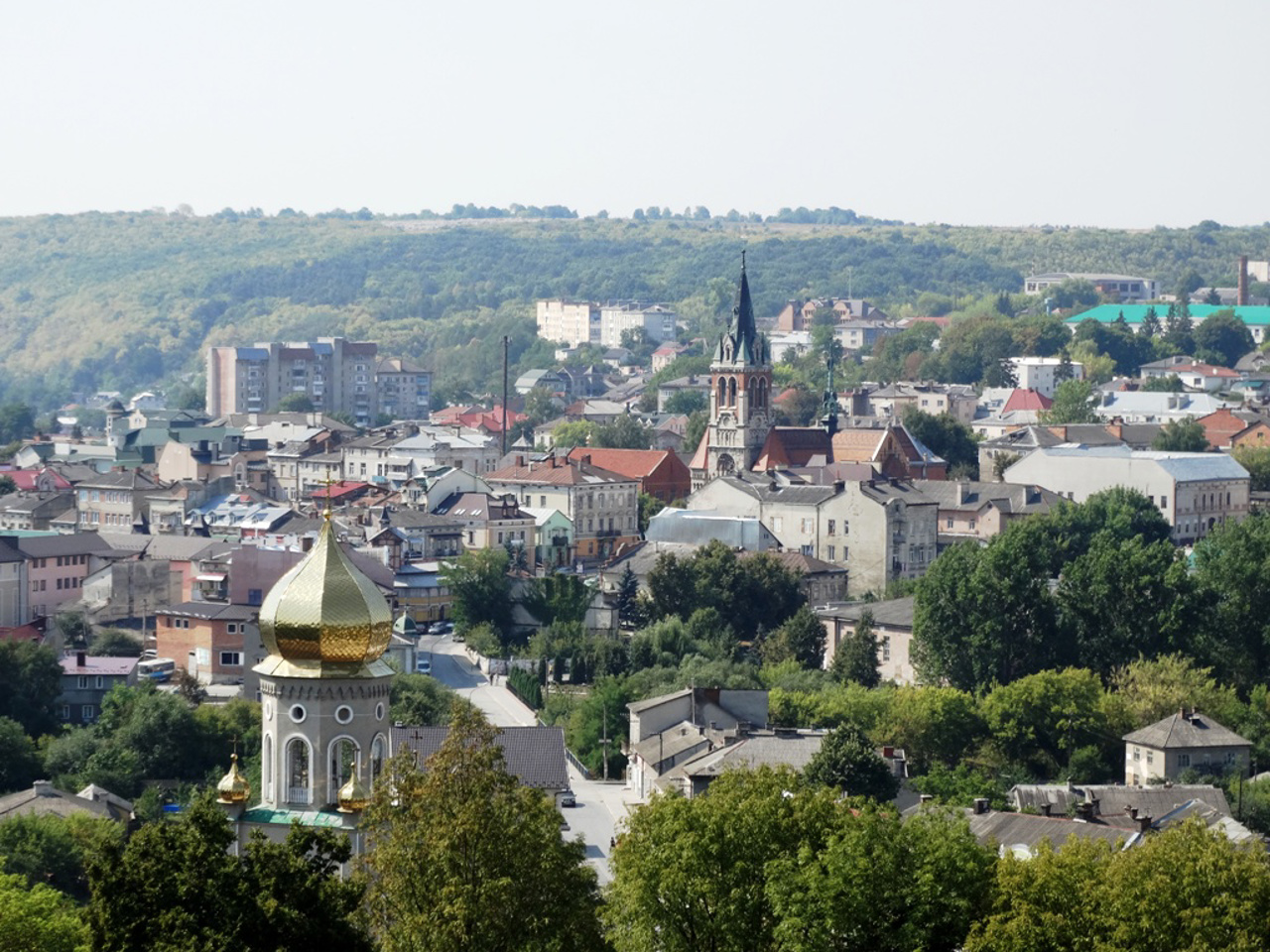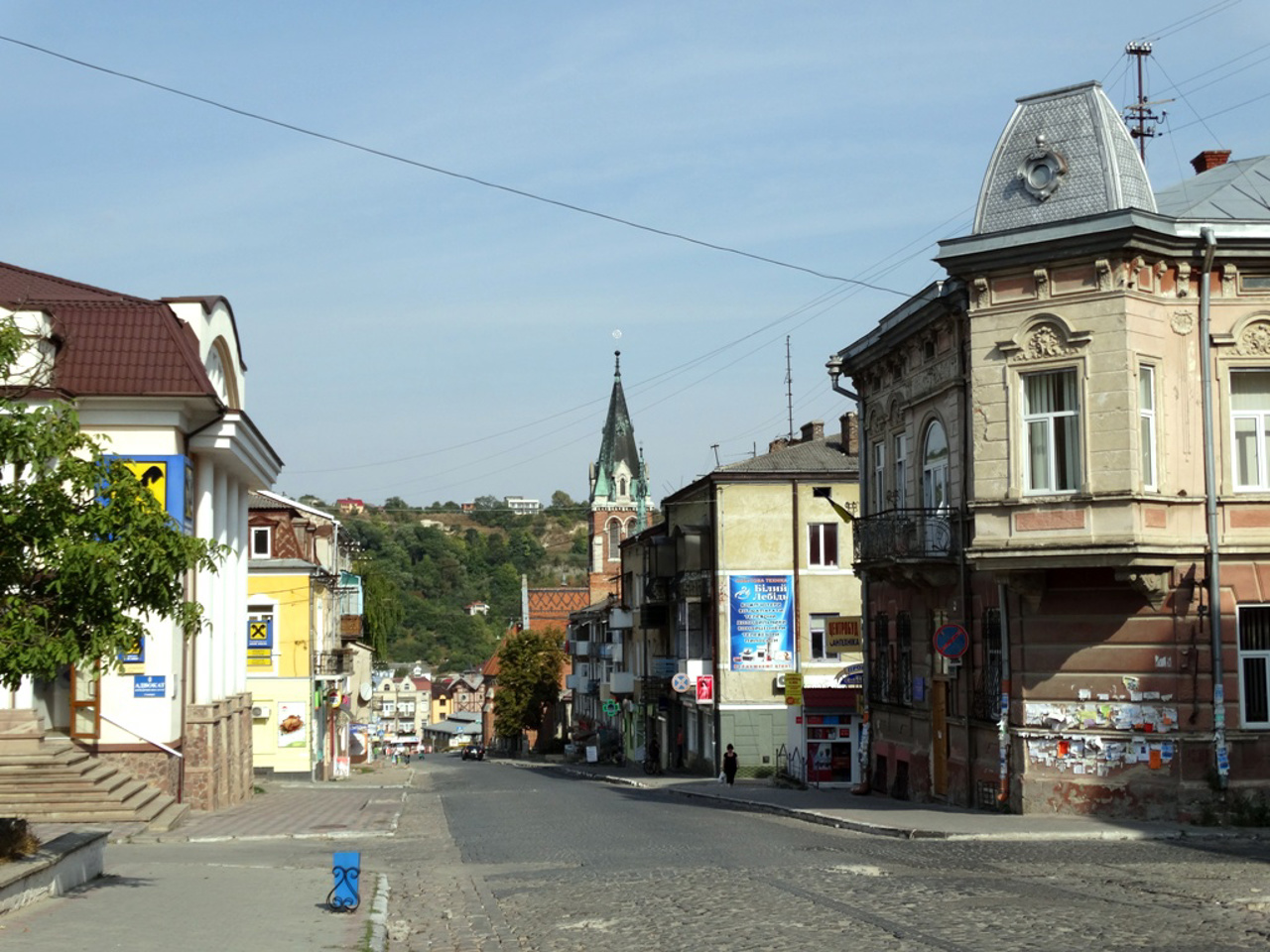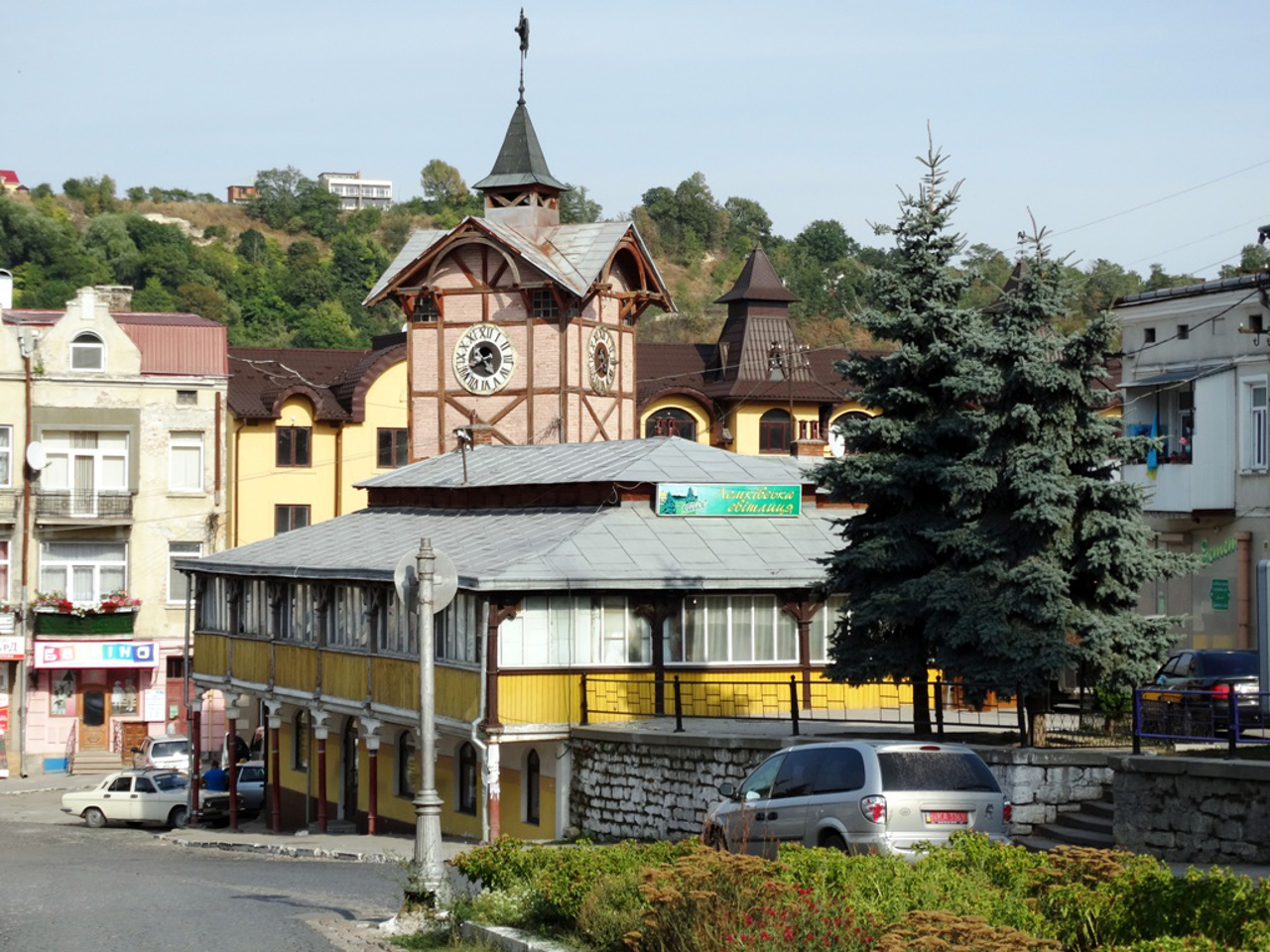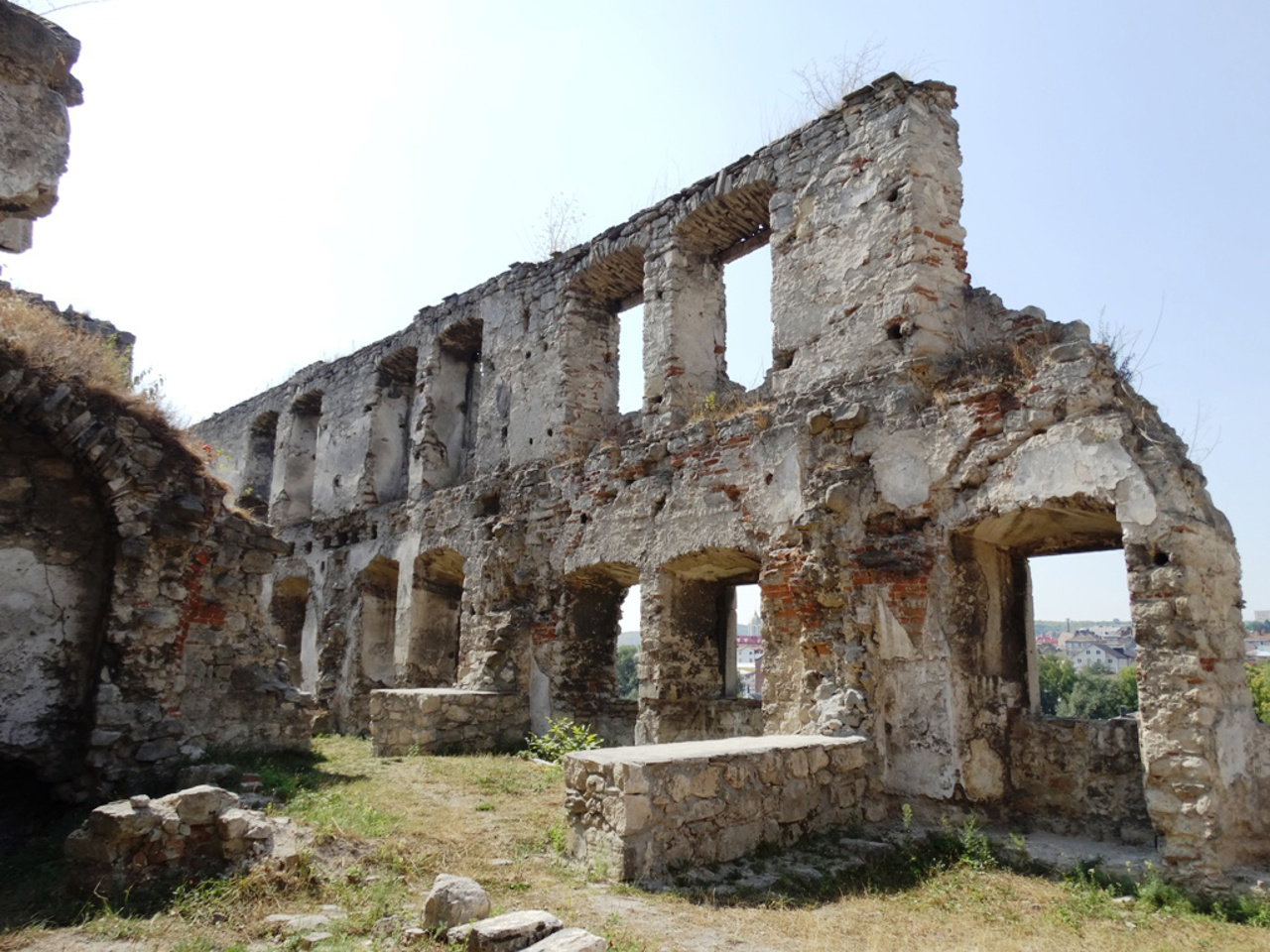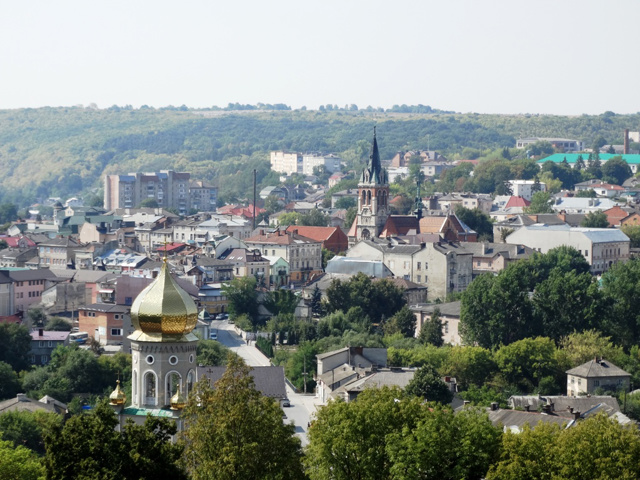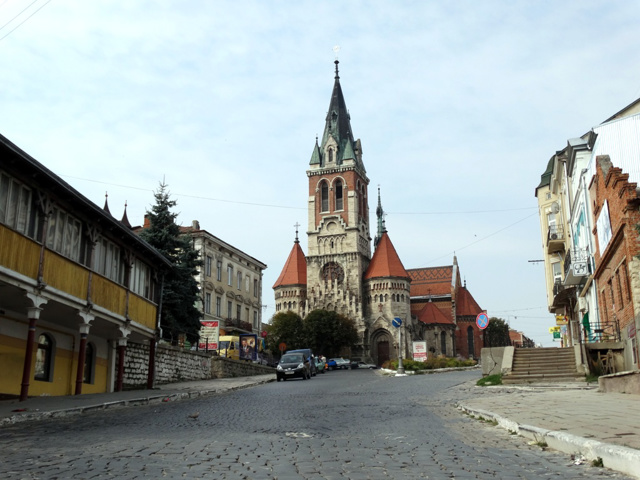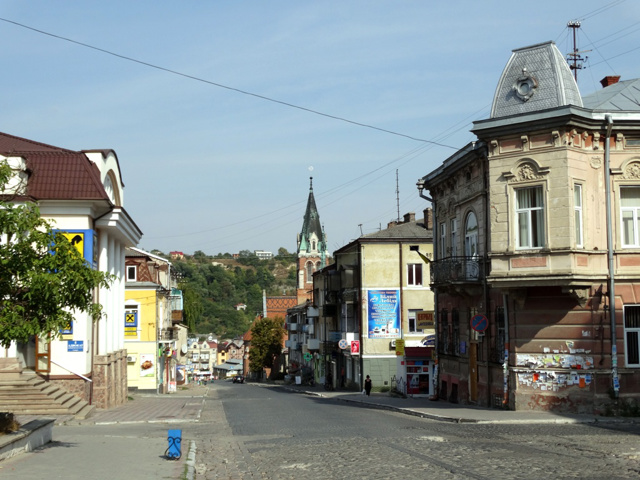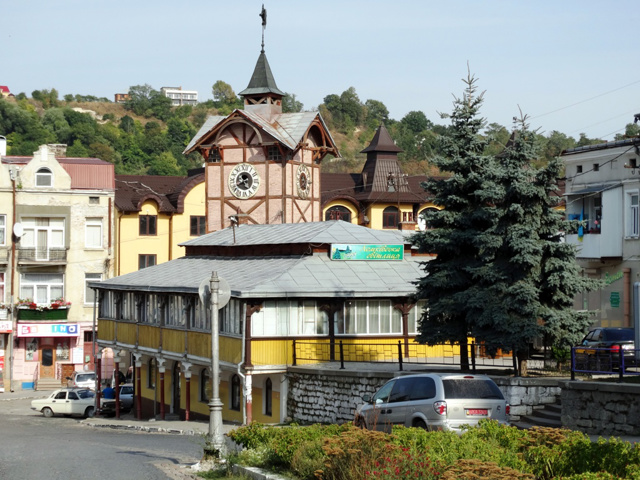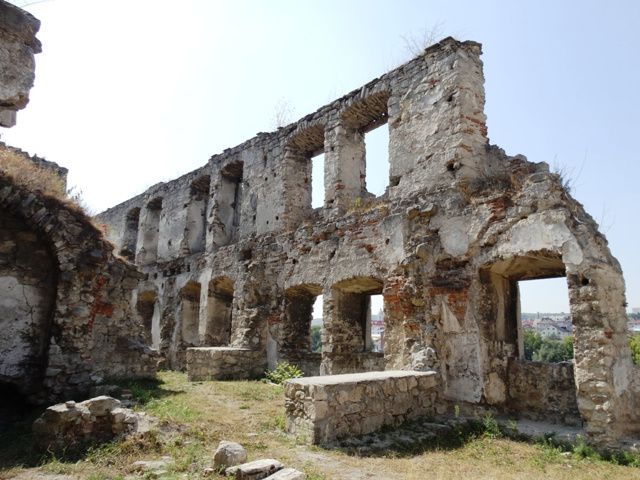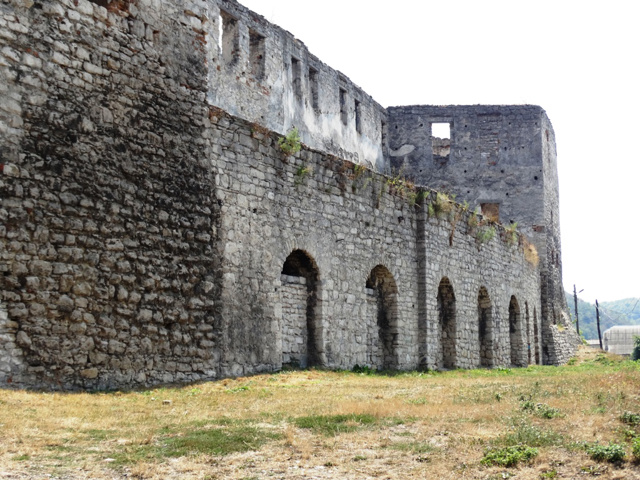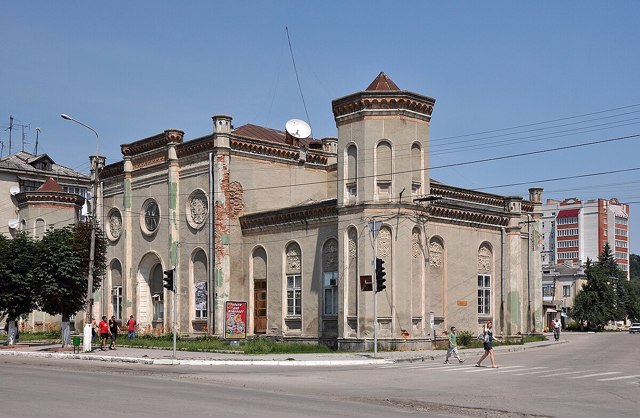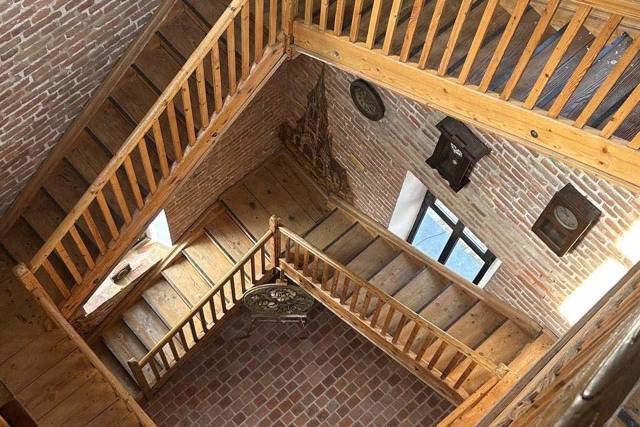Functional temporarily unavailable
General information about Chortkiv
The city of Chortkiv is a large regional center with a light European flavor in architecture, convenient for walking. Located on the banks of the Seret River between Ternopil and Chernivtsi.
It was founded in the 15th century by the nobleman Ivan (Yan) Prandotych (Prandotoy) from Polish Chartki, in whose honor Chartkovice was named. The grandson of the founder Yezhy Prandotych renamed the town to Chartkiv (Chortkiv) and took the surname Chartkovskyi. He also built the first wooden castle under Vyhnanska Hill.
At the beginning of the 17th century, the new owner, Stanislav Holskyi, built a stone castle-fortress and built a church, which was rebuilt at the beginning of the 20th century. In 1648, Chortkiv became one of the centers of the peasant uprising, then it was under the r ...
The city of Chortkiv is a large regional center with a light European flavor in architecture, convenient for walking. Located on the banks of the Seret River between Ternopil and Chernivtsi.
It was founded in the 15th century by the nobleman Ivan (Yan) Prandotych (Prandotoy) from Polish Chartki, in whose honor Chartkovice was named. The grandson of the founder Yezhy Prandotych renamed the town to Chartkiv (Chortkiv) and took the surname Chartkovskyi. He also built the first wooden castle under Vyhnanska Hill.
At the beginning of the 17th century, the new owner, Stanislav Holskyi, built a stone castle-fortress and built a church, which was rebuilt at the beginning of the 20th century. In 1648, Chortkiv became one of the centers of the peasant uprising, then it was under the rule of Turkey, Austria, and Poland.
Before the Second World War, a large Jewish community lived here. After the deportation of Ukrainians from Poland in 1947, a large community of Lemkos settled in Chortkiv, which now make up 20% of the district's population.
The market square of the old town, despite the neglect of most of the buildings, resembles provincial European towns. This color is created by a high neo-Gothic church, an old town hall with a clock on the tower and a rooster on the spire, small houses in the Art Nouveau style, curved cobbled streets.
Hotels and restaurants in Chortkiv are mostly of a low standard, but there are exceptions.
Місто Чортків - великий райцентр з легким європейським колоритом в архітектурі, зручний для піших прогулянок. Розташоване на берегах річці Серет між Тернополем і Чернівцями.
Засноване в XV столітті шляхтичем Іваном (Яном) Прандотичем (Прандотой) з польських Чартків, на честь яких отримало назву Чартковіце. Онук засновника Єжи Прандотич перейменував місто в Чарткув (Чортків) і взяв прізвище Чартковський. Він же заклав перший дерев'яний замок під Вигнанською горою.
На початку XVII століття новий власник Станіслав Гольський звів кам'яний замок-фортецю і заклав костел, перебудований на початку XX століття. В 1648 році Чортків став одним з центрів селянського повстання, потім перебував під владою Туреччини, Австрії, Польщі.
До Другої світової війни тут проживала чис ...
Місто Чортків - великий райцентр з легким європейським колоритом в архітектурі, зручний для піших прогулянок. Розташоване на берегах річці Серет між Тернополем і Чернівцями.
Засноване в XV столітті шляхтичем Іваном (Яном) Прандотичем (Прандотой) з польських Чартків, на честь яких отримало назву Чартковіце. Онук засновника Єжи Прандотич перейменував місто в Чарткув (Чортків) і взяв прізвище Чартковський. Він же заклав перший дерев'яний замок під Вигнанською горою.
На початку XVII століття новий власник Станіслав Гольський звів кам'яний замок-фортецю і заклав костел, перебудований на початку XX століття. В 1648 році Чортків став одним з центрів селянського повстання, потім перебував під владою Туреччини, Австрії, Польщі.
До Другої світової війни тут проживала численна єврейська громада. Після депортації українців з Польщі в 1947 році в Чорткові осіла велика громада лемків, які складають зараз до 20% населення району.
Ринкова площа старого міста, незважаючи на занедбаність більшості будівель, нагадує провінційні європейські містечка. Цей колорит створює високий неоготичний костел, стара ратуша з годинником на вежі та півником на шпилі, невеликі будиночки в стилі модерн, криві бруковані вулички.
Готелі та ресторани в Чорткові в основному невисокого рівня, але є винятки.
Сплануй своє перебування у Chortkiv
What to see and where to go in Chortkiv
Tourist attractions and museums of Chortkiv
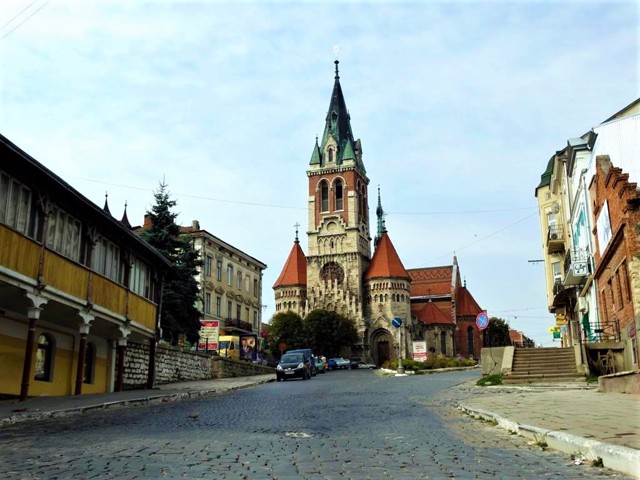
Saint Stanislav Dominican Church
Temple , Architecture
The Dominican Church of Our Lady of the Holy Rosary and Saint Stanislav in Chortkiv was built in the Neo-Gothic style at the beginning of the 20th century according to the project of the architect Yan Karol Sas-Zubzhytskyi on the site of the old cathedral, built in 1610 by the master of the city Stanislav Holsky as his burial place.
Initially, the Saint Stanislav Church was part of the defensive Dominican monastery complex, surrounded by walls with towers and loopholes, but before the First World War it was completely rebuilt (a fragment of the defensive wall remained on the back side).
The Dominican church in Chortkiv is considered one of the most beautiful neo-Gothic buildings in Ukraine. The architect Sas-Zubzhytskyi, being a supporter of historical stylizations, vividly embodied in this church the characteristic features of his own architectural style of "Visualian Gothic". The lower part of the church is made of stone, and the upper part is made of red brick. The figures of the saints were made by sculptors Cheslav Stovp and Diaman Stankevych.
During the Soviet rule, the Saint Stanislav Church was closed, but in 1989 it was returned to the Dominicans.
Since 2009, the temple in Chortkiv has been a sanctuary (holy repository) of the icon of the Mother of God of the Holy Rosary (Theotokos of Chortkiv).
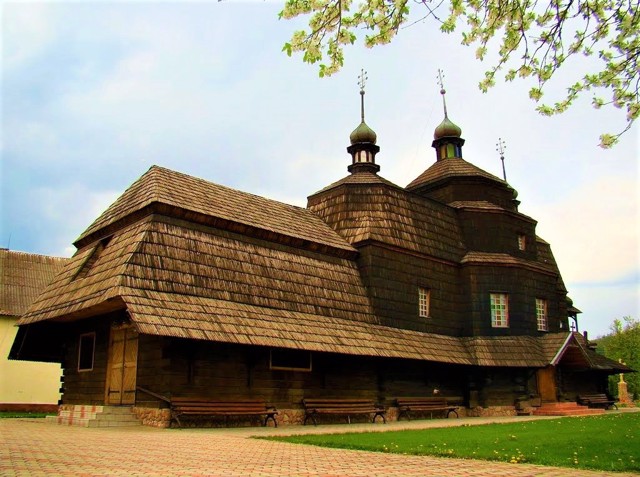
Ascension of Lord Church
Temple , Architecture
The Church of the Ascension of the Lord is located near the Chortkiv railway station.
It was built in 1717 on the site of a burned-down church founded in 1630 in the suburb of Dolishnya Vyhnanka.
This three-log wooden church is considered one of the best examples of Podillya folk architecture. The Church of the Ascension was built by Chortkiv folk craftsmen without a single nail, and impresses with its monumental forms. The interior has many carved details.
The Ascension Church belongs to the Ukrainian Greek Catholic Church.
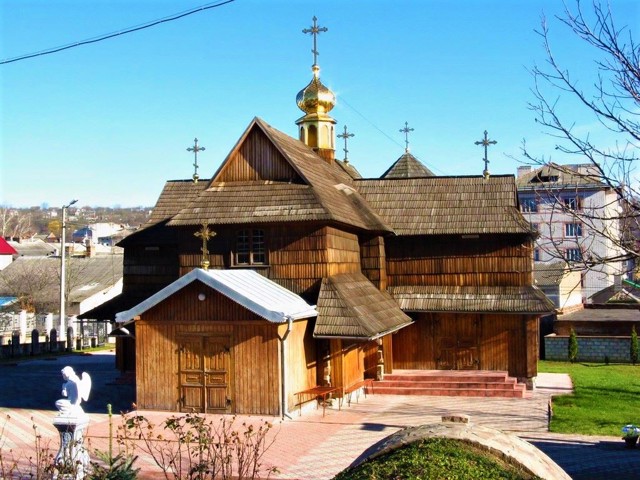
Assumption of Blessed Virgin Church
Temple , Architecture
The wooden Church of the Assumption of the Blessed Virgin Mary in Chortkiv is an example of Podillya folk architecture, the oldest surviving church in Chortkiv.
Assumption Church was founded in 1538 on the initiative of the city brotherhood, whose members were local craftsmen. It was rebuilt in its present form in 1635.
This type of church is called "house" - they were built like ordinary residential houses-huts without architectural decorations. Wooden log cabins are covered with a common shingle roof.
A wonderful carved iconostasis of the 18th century has been preserved.
Assumption Church belongs to the parish of the Orthodox Church of Ukraine.
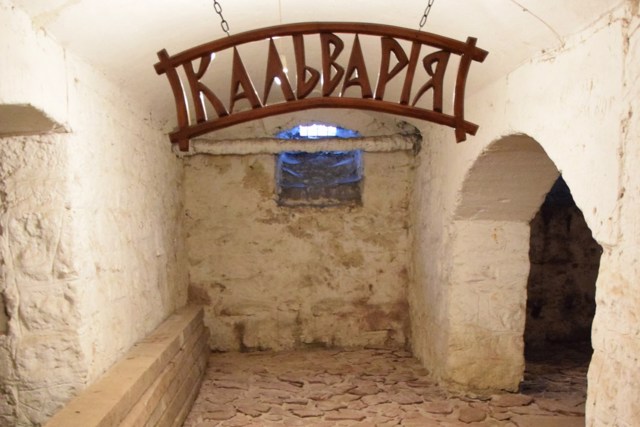
Bolshevik Terror, Political Prisoners and Repression Museum
Museum / gallery
The Museum of Bolshevik Terror, Political Prisoners and Repression in Chortkiv is located in the premises of the diocesan administration of the Buchach Eparchy of the Ukrainian Greek Catholic Church. The initiative for its creation belongs to the former UPA liaison officer, public activist Mariia Shtepa.
In the basements of the former monastery of the Sisters of Mercy (now the Immaculate Conception of the Virgin Mary Church), where during the Soviet occupation the NKVD detention centers were located, the "Calvary" exhibition is located. The interior of the prison cell has been recreated here, the hiding place of the repressed Greek Catholic Church has been reconstructed, and a church chapel has been equipped.
The exposition "Repressed Church" collects materials about the blessed Bishop Velichkosky. Authentic items from the 1940s, photos of the repressed, as well as symbolic pieces of land from places sprinkled with Ukrainian blood in the fight against the Russian occupiers are presented: Baturyn, Berestechko, Kruty, Uman, Makivka, etc.
A separate exhibition "The Chortkiv Offensive" tells about the offensive military operation of the Ukrainian Galician Army in 1919, which became one of the most significant events of the Polish-Ukrainian War of 1918-1919.
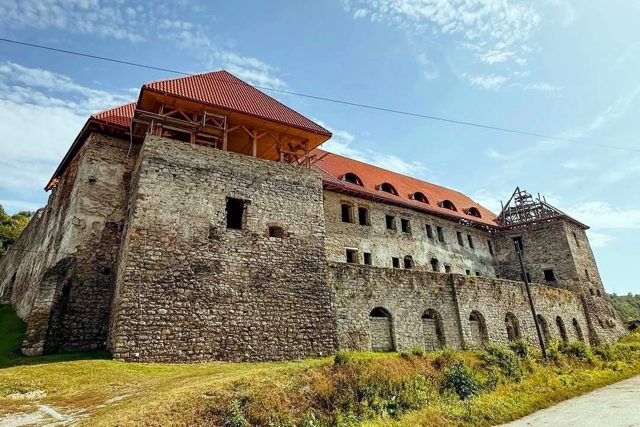
Chortkiv Castle
Castle / fortress
The stone Chortkiv Castle at the foot of the Vygnan mountain was built in 1610 by the new owner of these lands, Stanislav Holsky, on the site of the wooden fortress of the Princes of Chartkivsky.
The pentagonal fortification with towers at the corners, inside which the palace and farm buildings were located, was considered a typical defensive structure of its time, but it had an unfortunate strategic position - the Chortkiv Castle was repeatedly destroyed. In particular, in 1648 it was stormed by the troops of Maksym Kryvonos, and in 1672 it was captured by the Turks.
In the 19th century, the representatives of the Potocki princely family tried to restore the Chortkiv Castle, for some time it was owned by the order of Carmelite sisters, but it remained uninhabited and gradually fell into disrepair. During the 20th century, it was used as a warehouse. Until recently, it was owned by one of the city's utility companies.
In 2010, Chortkiv Castle is under the protection of the National Reserve "Castles of Ternopill Region". Archaeological research and conservation work are underway. It is planned to create a museum and a cafe.
Chortkiv in news and blogs
Reviews Chortkiv
Geographical information about Chortkiv
| {{itemKey}} | {{itemValue}} |
|---|---|
| Region |
Ternopil |
